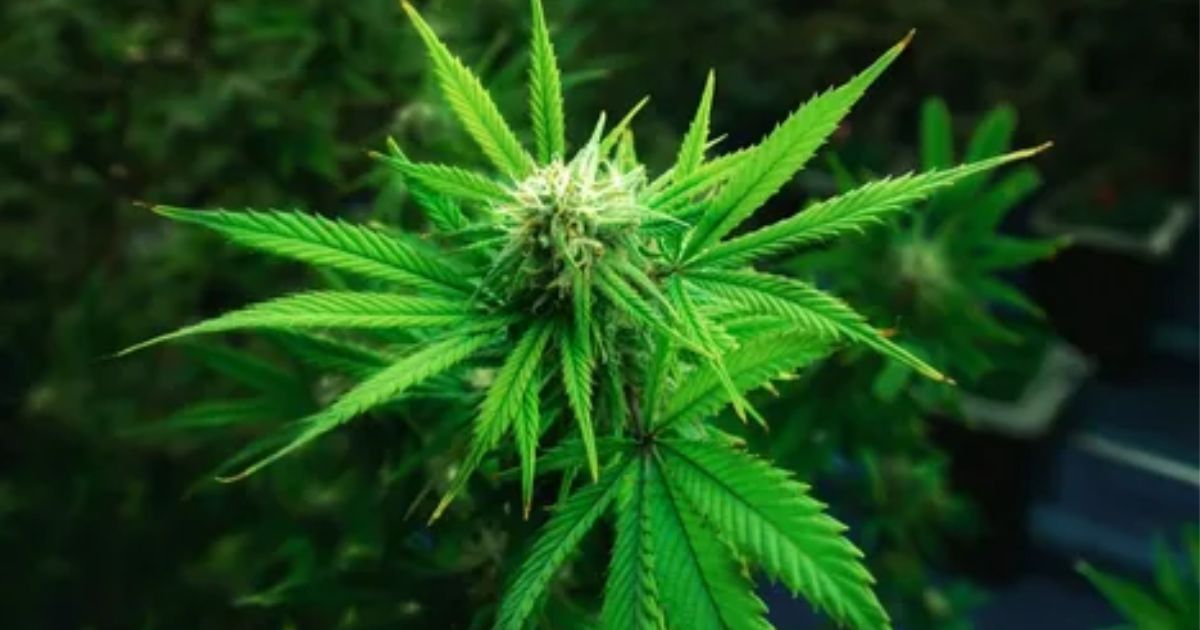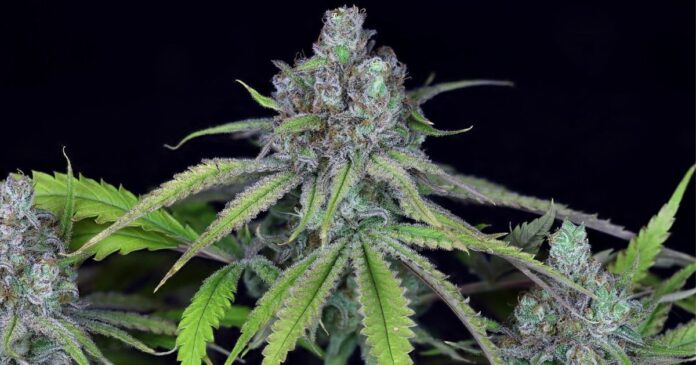When it comes to cannabis, few names carry as much weight and history as the Kush plant. Originating from the rugged mountain regions of Afghanistan and Pakistan, Kush has become synonymous with quality, potency, and distinct flavor. Whether you’re a seasoned cannabis enthusiast or just beginning your exploration, understanding what makes Kush so special can elevate your appreciation for this legendary strain family. In this blog post, we’ll dive into the unique flavor profiles, powerful effects, and impressive benefits that the Kush plant offers, helping you decide if it’s the right choice for your cannabis experience.
Origins and Genetic Heritage
The Kush plant traces its roots to the Hindu Kush, a rugged mountain range spanning Afghanistan, Pakistan, and India. This region’s harsh climate, with its cold nights and arid conditions, shaped the Kush strain’s resilience and unique characteristics. Landrace Kush strains, such as Hindu Kush, were brought to the Western world in the 1960s and 1970s by adventurous growers and breeders, sparking a revolution in cannabis cultivation.
Kush strains are predominantly indica, typically exhibiting a 70-100% indica genetic makeup. Their genetics have been crossed with various sativas and hybrids, giving rise to legendary strains like OG Kush, Bubba Kush, Purple Kush, and Master Kush. Each variant carries the signature Kush traits—dense buds, earthy aromas, The Truth About Purple on Weed Strains and deeply relaxing effects—while introducing subtle differences in flavor and potency. For example, OG Kush, a hybrid with possible ties to Chemdawg and Hindu Kush, is known for its lemony, fuel-like scent, while Purple Kush adds vibrant purple hues and a sweeter profile.

The Kush family’s adaptability and robust genetics have made it a staple for breeders, resulting in a diverse array of phenotypes that cater to a wide range of preferences. Its influence is evident in modern hybrids like Girl Scout Cookies and Wedding Cake, which owe their potency and flavor to Kush lineage.
Flavor and Aroma Profile
One of the og kush plant most defining features is its complex and captivating flavor profile. Dominated by the terpene myrcene, Kush strains typically exude an earthy, musky aroma with notes of pine, wood, and spice. This grounding scent is often complemented by secondary terpenes like caryophyllene (spicy, peppery) and limonene (citrusy), which add layers of complexity.
- Hindu Kush: Offers a classic earthy, sandalwood-like aroma with hints of sweet spice and floral undertones. When smoked or vaped, it delivers a smooth, herbal flavor with a slightly sweet finish.
- OG Kush: Known for its pungent, diesel-like scent with zesty lemon and pine notes. Its flavor is sharp and citrusy, with a lingering earthy aftertaste.
- Bubba Kush: Features a rich, coffee-like aroma with chocolatey and nutty undertones. Its taste is sweet and earthy, Master Kush Strain : The Legendary Indica Dominant often with a subtle mocha-like quality.
- Purple Kush: Combines earthy Kush notes with sweet, grape-like flavors, giving it a dessert-like appeal.
The interplay of terpenes not only defines the og kush plant sensory experience but also enhances its effects through the entourage effect, where cannabinoids and terpenes work together to amplify therapeutic and psychoactive outcomes. Whether consumed via smoking, vaping, or edibles, Kush is a popular choice among cannabis connoisseurs who appreciate a strong, fragrant experience because of its intense flavors.
Effects of the Kush Plant
Kush strains are renowned for their potent, indica-driven effects, which prioritize relaxation, sedation, and physical comfort. THC concentrations typically fall between 15% and 25%. (and occasionally higher in specific phenotypes), Kush delivers a powerful high that appeals to both recreational and medical users.
Upon consumption, Kush strains often induce an immediate sense of calm and euphoria, washing away stress and tension. The cerebral high is subtle, characterized by a mild mood boost and a feeling of mental clarity, making it ideal for use in the evening or to unwind after a long day. As the high intensifies, the indica dominates, Skywalker OG Strain: What You Need to Know Before You Try It offering a deep, all-encompassing relaxation that can ease tense muscles and promote serenity.
Common effects include:
- Relaxation: A hallmark of orange kush plant, perfect for de-stressing or preparing for sleep.
- Euphoria: A mild, mood-boosting high that enhances feelings of happiness and contentment.
- Sedation: Many Kush varieties, like Bubba Kush and Purple Kush, are known for their couch-lock potential, making them excellent for nighttime use.
- Sensory Enhancement: Users often report heightened appreciation for music, food, or visual art, adding to the strain’s recreational appeal.
However, the potency of Kush can lead to negative consequences, especially for novice users or those with sensitivity. Particularly with overconsumption, symptoms like dry mouth, dry eyes, lightheadedness, or moderate paranoia may appear. It is advised to start with a low dosage and increase it gradually to determine the ideal
Medical Benefits of Kush
The platinum kush plant therapeutic potential is one of its most compelling attributes, making it a go-to choice for medical cannabis patients. Its indica-heavy effects and rich terpene profile offer alleviation of a range of illnesses, both mental and physical.
Mental Health Benefits
- Stress and Anxiety: The calming, euphoric effects of Kush can help reduce stress and anxiety, providing a sense of mental peace. Strains like Master Kush are particularly effective for their balanced, non-overwhelming high.
- Depression: The mood-lifting properties of orange kush plant can alleviate depressive symptoms and promote well-being.
- Insomnia: Kush’s sedative qualities make it a powerful ally for those struggling with sleep disorders. How to Grow Your Own Cookies Strain Strains like Bubba Kush and Hindu Kush are especially effective for promoting deep, restful sleep.
Physical Health Benefits

- Chronic Pain: The analgesic properties of Kush, driven by myrcene and caryophyllene, can help manage conditions like arthritis, fibromyalgia, and migraines.
- Muscle Spasms and Tension: The strain’s muscle-relaxing effects are beneficial for conditions like multiple sclerosis or injury-related spasms.
- Nausea and Appetite Loss: Because kush is known to increase appetite (often called “the munchies”), tentex forte tablet uses in tamil it can help individuals with eating disorders or chemotherapy.
- Inflammation: Caryophyllene’s anti-inflammatory properties may help reduce inflammation associated with conditions like Crohn’s disease or rheumatoid arthritis.
To make sure Kush is safe, medical users should speak with a healthcare professional. Appropriate for their needs, especially given its potency and potential for sedation. Starting with microdoses, particularly for strains like OG Kush with higher THC levels, can help avoid unwanted side effects.
Growing the Kush Plant
For cultivators, the platinum kush plant is a rewarding choice due to its resilience, compact growth, and high-quality yields. Its indica genetics result in shorter, bushier plants compared to sativas, making it suitable for indoor and outdoor cultivation. However, its dense buds require careful humidity management to prevent mold.
Cultivation Tips
- Environment: Kush thrives in warm, Mediterranean-like climates with temperatures between 65-80°F (18-27°C). Indoor growers should maintain humidity at 40-50% during the vegetative stage and 30-40% during flowering to avoid mold and bud rot.
- Lighting: Use full-spectrum LED or HPS lights for indoor grows to maximize bud development. Ensure 18-24 hours of light during the vegetative phase and 12 hours during flowering.
- Nutrients: Provide nitrogen-rich fertilizers during the vegetative stage and switch to phosphorus- and potassium-rich nutrients during flowering. Keep the pH of the soil between 6.0 and 7.0 or the hydroponic pH between 5.5 and 6.5 for optimal nutrient uptake.
- Training: Techniques like Sea of Green (SOG) or Screen of Green (ScrOG) can maximize yields by encouraging Alien ET THCa Flower lateral growth and even light distribution. Prune lower foliage to improve airflow and reduce mold risk.
- Flowering and Harvest: Kush strains typically have a flowering time ofHarvests outside are ready by late September or early October after 8–10 weeks indoors. For maximum efficacy, harvest when the trichomes are primarily milky with some amber. To improve flavor and smoothness, cure buds in airtight jars for 2-4 weeks after drying them for 7-14 days at 60-70°F (15-21°C) and 45-55% humidity.
Yields vary by strain and conditions, with indoor grows producing 400-600 g/m² and outdoor plants yielding 500-800 g per plant. Strains like Bubba Kush and Purple Kush are known for their dense, resinous buds, while OG Kush may produce slightly lower but highly potent yields.
Cultural Significance and Popularity
The Kush plant’s cultural impact is undeniable, with its name synonymous with quality and potency in cannabis culture. From its introduction to the West during the counterculture movement to its prominence in hip-hop and pop culture, Kush has left an indelible mark. hempushpa syrup uses in marathi Songs like Dr. Dre’s “Kush“ and references in countless rap lyrics have cemented its status as a symbol of relaxation and luxury.

Kush’s popularity extends to dispensaries and legal markets, where it’s available as cheapest thca flower, concentrates, edibles, and vapes. Its versatility and recognizable name make it a well-liked choice for both novice and expert users. Online platforms like Leafly and Weedmaps feature glowing reviews, with users praising their relaxing effects, bold flavors, and medical efficacy. Social media communities, including Reddit and Instagram, are filled with photos of Kush’s frosty buds and stories of its soothing effects.
Potential Drawbacks
While the Kush plant is celebrated, it’s not without challenges. Its sedative effects may be too intense for daytime use or for users seeking a more energizing high. Side effects, including dry eyes, can result from high THC doses. Symptoms may include mouth dryness, dry eyes, or anxiety, particularly in sensitive individuals. Growers must be vigilant about humidity and airflow to prevent mold, especially with dense indica buds.
Conclusion
The Kush plant is a titan in the cannabis world, blending rich flavors, potent effects, and versatile benefits into a single, iconic strain. Its earthy, musky aroma, paired with relaxing and euphoric effects, makes it a favorite for recreational users seeking calm and medical patients addressing pain, insomnia, or stress. For growers, its resilience and high yields offer a rewarding cultivation experience, while its cultural significance ensures its place in cannabis history.
Whether you’re savoring the piney notes of Hindu Kush, the citrusy punch of OG Kush, or the sweet decadence of Purple Kush, this strain family delivers an experience that’s as powerful as it is timeless. As cannabis continues to gain acceptance, the Kush plant remains a beacon of quality, proving that sometimes, the classics are hard to beat.
FAQ
What kinds of flavors will the Kush plant produce?
Kush strains typically feature earthy, pine, and spicy flavors with hints of citrus or sweet undertones. This rich, robust profile makes Kush distinct and enjoyable for users who appreciate complex, natural cannabis tastes.
What kind of effects does Kush produce?
Kush strains generally provide deep relaxation and a calming body high, often accompanied by mild euphoria. It’s great for stress relief, pain management, and unwinding, but some phenotypes can also offer uplifting and creative cerebral effects.
Is Kush suitable for medical use?
Yes, Kush is widely used medicinally to alleviate chronic pain, insomnia, anxiety, and muscle spasms. Its calming effects and moderate THC levels make it a popular option for those looking for treatment without a lot of sedation.
How long does Kush’s high usually last?
The high from Kush strains typically lasts between two and four hours, depending on dosage and individual tolerance. The relaxing effects on the body may linger, helping users maintain calmness and comfort for an extended period.
Can Kush be grown indoors?
Absolutely, Kush plants thrive indoors in controlled environments. They prefer warm temperatures and moderate humidity. Indoor cultivation allows growers to manage light cycles and airflow, producing dense buds rich in resin and aroma.




